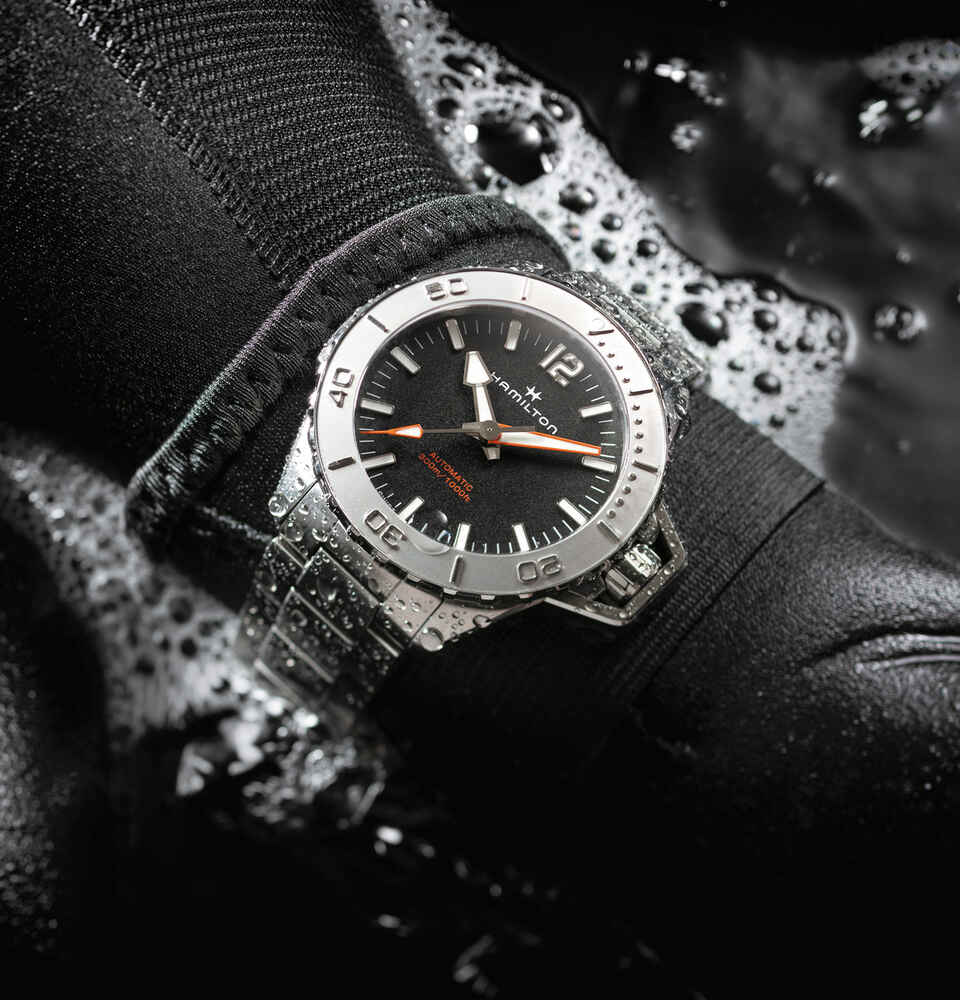Everything you need to know about water resistance in watches
Just a quick dip in the shower and then the shock: your favorite watch is still on your wrist! In most cases, the beloved timepiece is then irretrievably lost, but fortunately there are waterproof watches, such as the Longines HydroConquest. Especially when the next beach vacation is just around the corner, many watch lovers wonder how deep and whether they can even go into the water with their watch. Water resistance claims are often misleading - because you can't dive that deep under any circumstances with a waterproof watch that's water resistant up to 50 meters.
The data in meters only corresponds to an artificially generated pressure in a water tube. However, due to currents and our own body movements, the pressure under real conditions is many times higher, so that we should not even use a 50-meter waterproof watch for swimming. Instead of meters, you can often find information in bar and atm. Here, 5 bar or 5 atm correspond to 50 meters and 10 bar correspond to 100 meters.
When testing diving watches, many different points must be considered and tested. These include among others the Readability, shock resistance, rate behavior and tightness in the event of excess air pressure. Only if the waterproof watch meets all the requirements, it can call itself a diver's watch.
Special testing devices are used to check diving watches. For example, water pressure is simulated in a leak tester. But what is it like under water? If the diver's watch withstands the pressure, it is also equipped for the respective amount of pressure under water, because water molecules are larger than air molecules and can thus penetrate the watch even more poorly.
Safety first: If a watch has a pressure rating on it, such as 20bar, the manufacturers have not only subjected the diver's watch to that specified pressure, but they have increase this value by 25 percent. This ensures that the watch has enough water resistance at all times and that no moisture gets into the watch even in the long term.
Activating the crown on the watch can affect the water resistance, because the crown only provides protection when it is screwed on tightly or seated. Activating pushers on a chronograph under water can affect water resistance, as it allows water to enter the case. Very important: The crown and pushers should therefore not be used under water.
Waterproof watches are not invulnerable despite their robustness. So you should be careful not to expose your watch to direct sunlight or salt water for too long. This will the seals are attacked and can become porous. Therefore, clean your waterproof watch carefully with clear fresh water after a swim in the sea.
You should also avoid going to the sauna. The high humidity and heat will heat up the waterproof watch and it may become brittle and damaged when it cools down quickly.
A watch will by no means remain waterproof forever. This is because the seals that close the openings of the case become porous over time. They are subject to a natural aging process that can be accelerated by external influences such as sunlight and perspiration. It is therefore recommended to have the seals checked annually.
We offer this service in our in-house watchmaker workshop and check the seals of your watch. We can also test the water resistance with a printout if desired. Contact us, we will be happy to help you!
The care of automatic watches requires special caution. Most watches have information about water resistance on the case back. In the case of particularly water-resistant watches, you will also usually find an imprint on the dial. If you are unsure of how water resistant your watch is, you can check the instruction manual of your watch.
A wristwatch must meet strict, predefined criteria to be allowed to call itself a diver's watch, like the Longines HydroConquest. Professional divers use their watches to measure decompression times, among other things. These are essential for survival, so that the diver does not ascend too quickly, causing pressure-related gas bubbles to form inside the body. The DIN 8306 specifies the minimum requirements for a diver's watch:
- tested water resistance of at least 20 bar
- the watch must be easily readable at a distance of 25cm even under water in darkness
- with the help of a timer or a bezel, it must be possible to measure periods of time.








